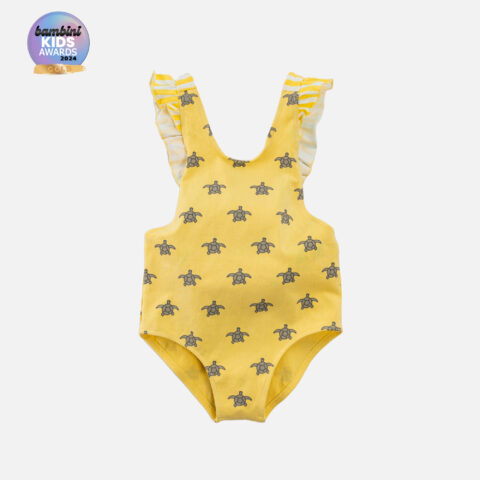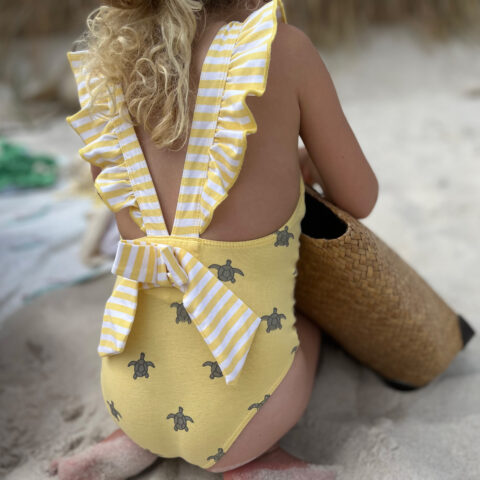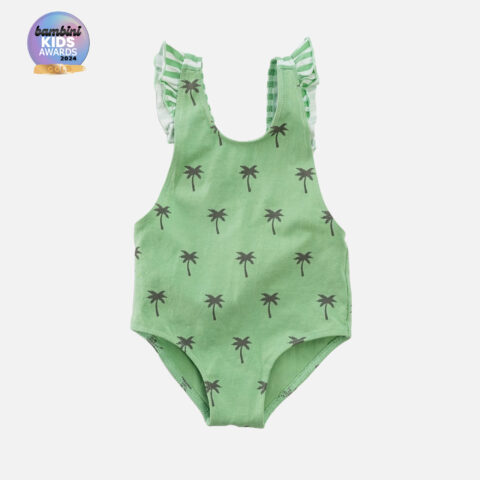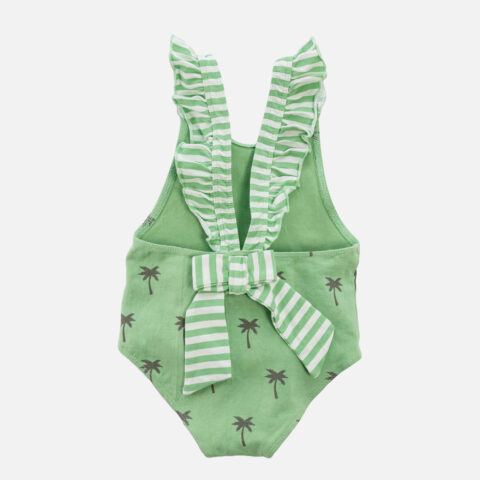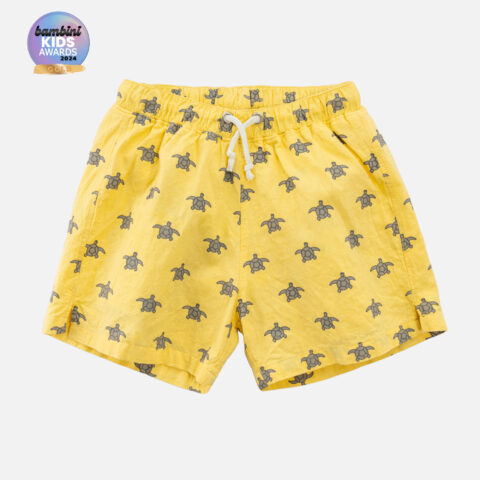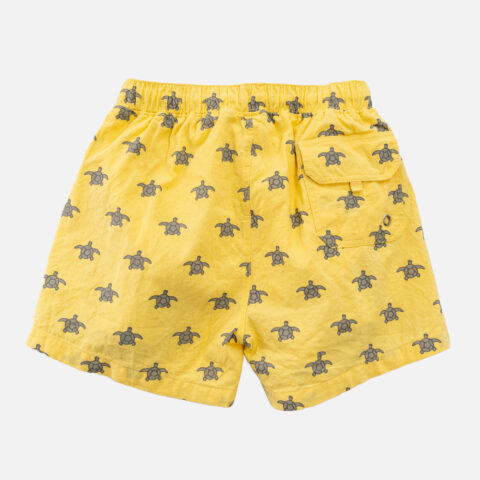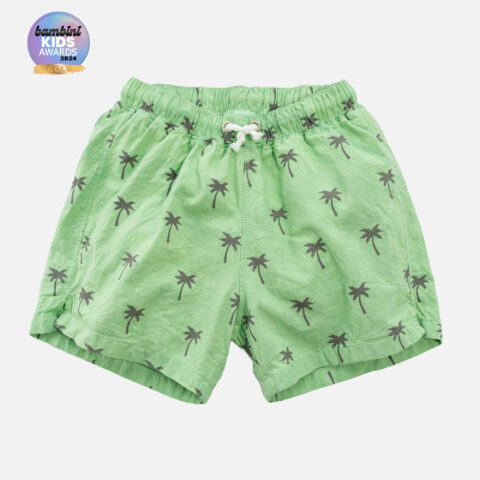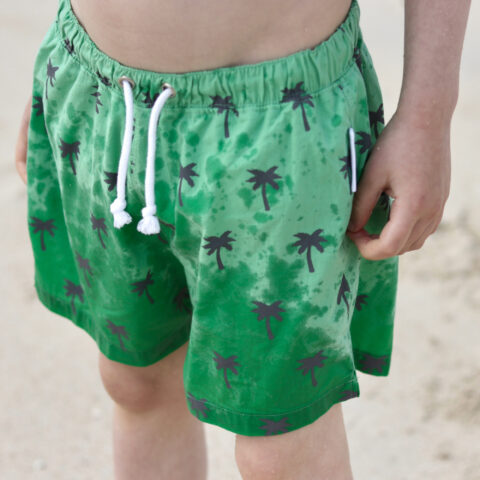
Explore our latest blog post with Emma Bianco, Founder of Pure Earth Collection, as she delves into the urgent need for organic swimwear in combating today’s microplastic crisis:
Microplastics are one of today’s biggest global threats to human health and the environment, and synthetic fabrics are one of the top polluters on our planet. Microplastics are tiny plastic fragments, anything less than 5mm in diameter. They are detrimental to our ecosystems because once released into the environment they are almost impossible to clear up. As they break down, they release thousands of toxic chemicals and are causing untold destruction to marine life, coral reefs, human health and all parts of the food chain. So for me, it has always seemed crazy that synthetic, microplastic shedding fabrics are the go-to for swimwear around the world.
In my quest to reduce my family’s exposure to microplastics and our impact on the planet, I have spent years trying to find natural swimwear, something which will not shed microplastics into our bodies and the waterways. But natural swimwear is almost impossible to find, especially for kids.
Below is a summary of the reasons I am so passionate about the benefits of natural swimwear for our health and our planet and why it is such an essential step towards solving today’s microplastic crisis. I will try to keep this as brief as possible as there is SO much I can say on this topic!
It’s useful to understand that there are two main categories of microplastics:
- Secondary microplastics: These are plastic fragments which result from the breakdown of larger plastics
- Primary microplastics: These are plastics which are intentionally made in a small size, such as microbeads and synthetic fibres.
Unfortunately, almost all swimwear sold around the world is made from synthetic fabrics and is therefore classed as a primary microplastic. This is reaping havoc not just on our waterways, but also on our health. The smallest fragments of these fibres, known as nanoplastics, are known to pass through our skin barrier into our bloodstream, where they are deposited in our hearts, lungs, brains and other major organs. On top of this, the natural oils in our skin leach chemical additives out of the plastic fibres, which are then absorbed directly into our skin and bioaccumulate in our bodies. You can find more information on this from a 2023 study here.
Why recycled plastics are more toxic than virgin plastics
Much of the so claimed ‘sustainable’ swimwear is made from recycled plastics. While this might be well intentioned, 2023 was the year that shone a light on the dangers of recycled plastics. Last year there was a lot in the news about recycled plastics being significantly more toxic than virgin plastics. And the studies also revealed that the recycling process is extremely harmful for the workers involved, which often affects the most vulnerable communities in low income countries resulting in high rates of cancer, lung disease and adverse birth outcomes. This information was a result of hundreds of peer reviewed studies which showed the high toxicity of recycled plastics and also the presence of harmful chemicals in plastics that shouldn’t contain those chemicals. For example, BPA and Pfas were found in recycled synthetic fabrics. There’s a great summary of these reports here.
Essentially, this is due to two main reasons:
1. The high heat needed during the recycling process releases chemicals in the plastics; and
2. Because of contamination in the recycling process. This is why a lot of recycled polyesters (and other recycled fabrics) have been found to contain chemicals which shouldn’t be present in those particular fabrics types. There are many studies and reports on this, but I fine the one here useful.
Further environmental reasons why recycled plastics should not be used for clothing, particularly clothing designed for swimming
As well as the issue of increased toxicity in recycled synthetics, taking hard plastics like plastic water bottles (the PET plastic type) and turning it into polyester involves taking a solid plastic and turning it in to primary microplastics. This just speeds up the catastrophic process of plastics turning into microplastics. Microplastics are dangerous on so many levels but they are a particular concern for our planet because they are so hard clear up / remove from the environment. Much harder than the plastic bottles themselves. So turning water bottles into microplastics is fast-tracking the cycle.
Let’s think this through logically: Plastic bottles are turned into microplastic and then worn by humans in the oceans, shedding millions of plastic particles directly into the ecosystems we are trying to protect.
What is the most environmentally friendly swimwear
The only way to limit the amount of microplastics going into our bodies and the oceans from our swimwear is to choose natural (and ideally organic) fabrics for swimming costumes and swimming trunks. Excitingly, after many requests and much anticipation, we have just launched our range of organic cotton swimwear for kids aged 2-13.
Our swimming costumes are made using 98% organic cotton and just 2% lycra, and our swimming trunks are 100% organic cotton for the outer shell, and 98% organic cotton and 2% lycra for the inner briefs. In an ideal world, we wouldn’t use any lycra at all in our swimwear, but without it, the function of the fabric isn’t fit for purpose and also doesn’t last. For next year we’re now developing a line of swimwear which will use bio-based, totally degradable lycra, so we will be able to achieve a 100% plastic-free swimwear range. And for now, we are proud to have produced our organic cotton swimwear range which contains a whopping 98% less microplastics than conventional swimwear! The choices we make today can help build a healthier and more sustainable future for our kids.

